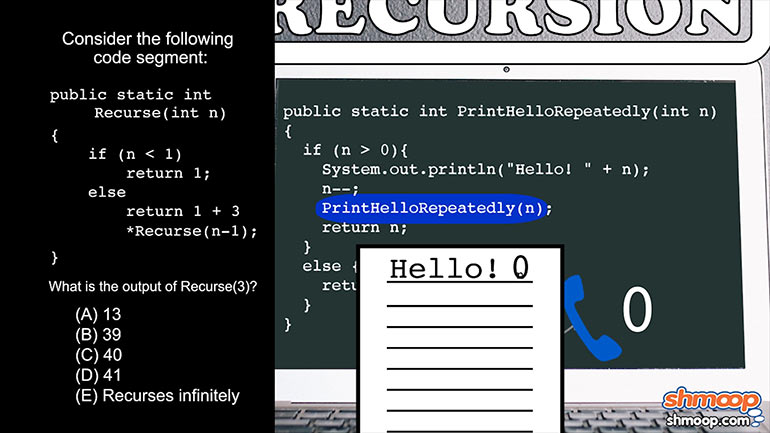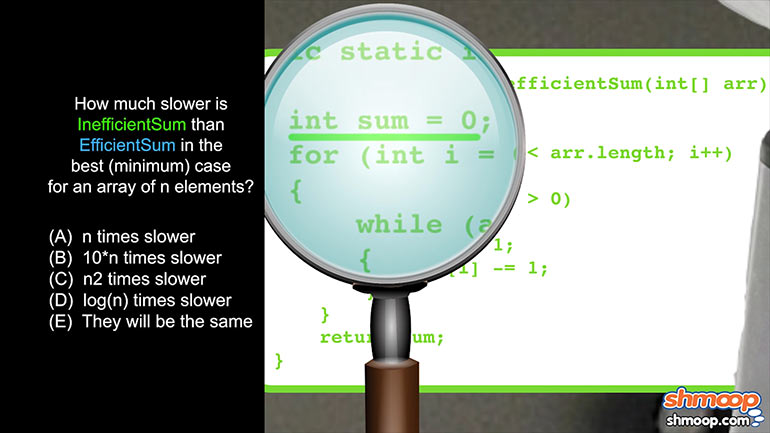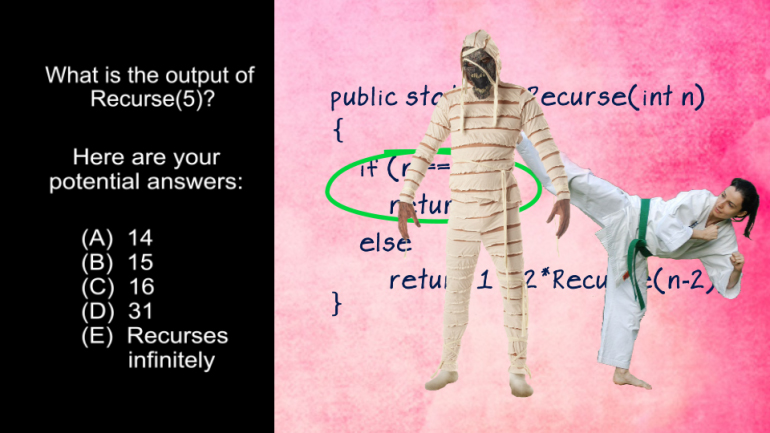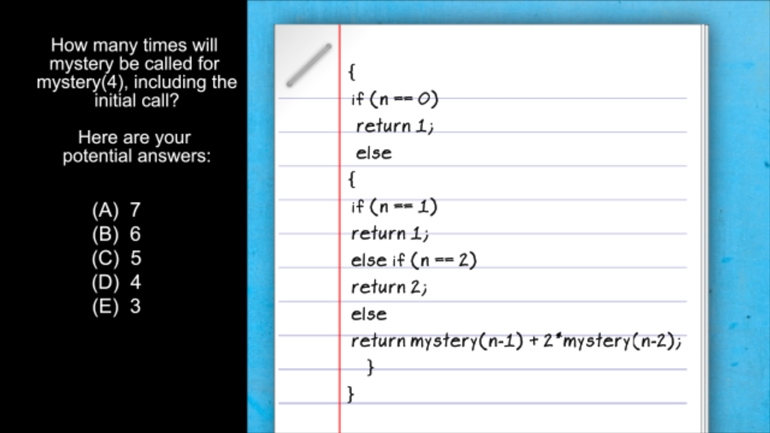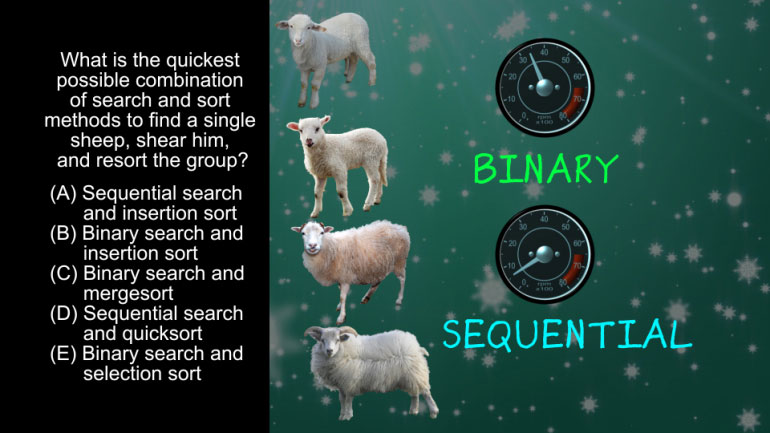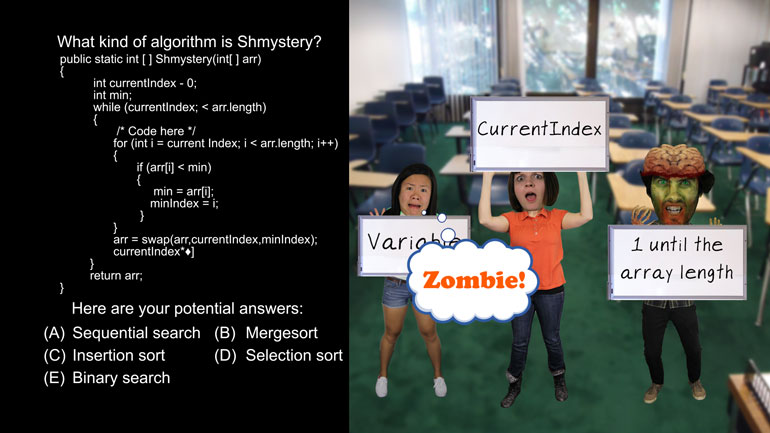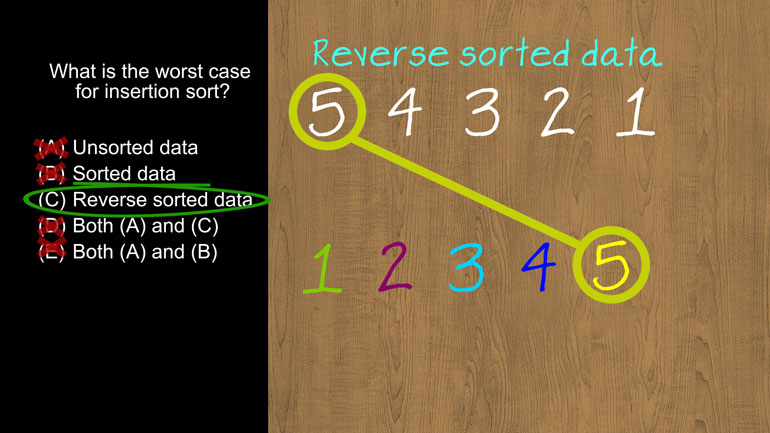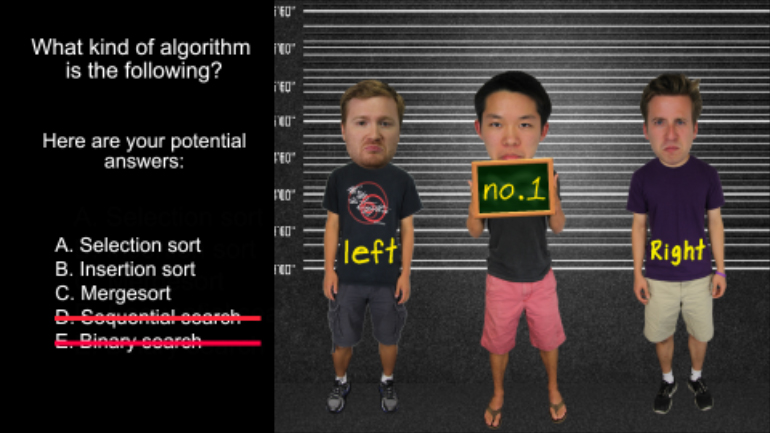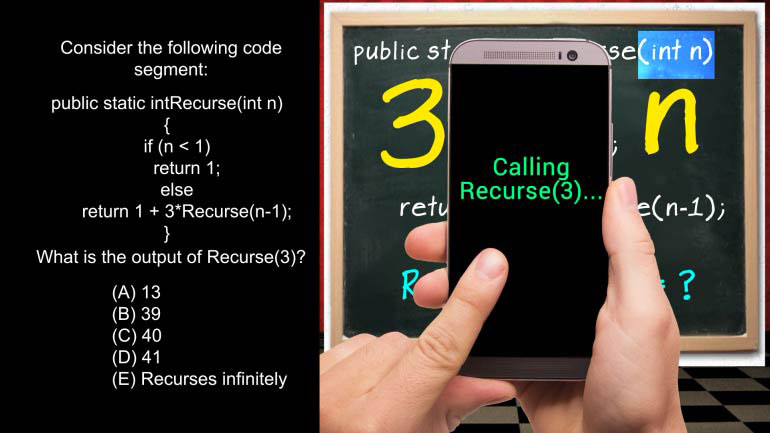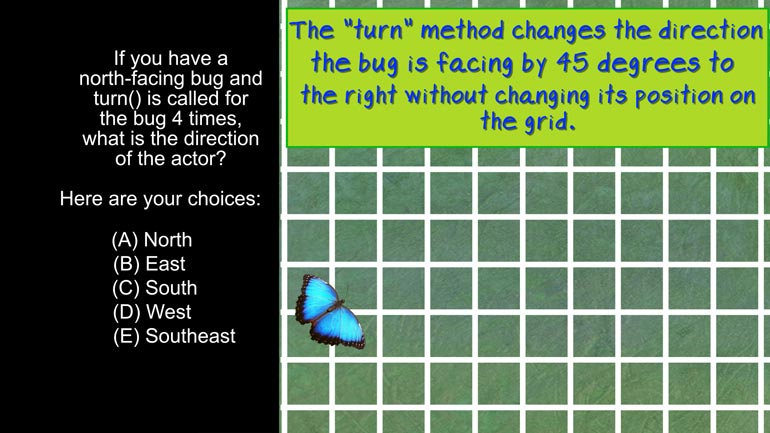ShmoopTube
Where Monty Python meets your 10th grade teacher.
Search Thousands of Shmoop Videos
Standard Algorithms Videos 20 videos
APCS: Standard Algorithms Drill 2, Problem 1. How much slower is InefficientSum than EfficientSum in the best case for an array of n elements?
In this computer science drill question, figure out which implementation will copy one array over to another.
AP Computer Science: Standard Algorithms Drill 3, Problem 3. What should go in "expression 1" to satisfy the conditional statement?
AP Computer Science 3.3 Standard Data Structures 177 Views
Share It!
Description:
APCS: Standard Data Structures Drill 3, Problem 3. Which of the following is not true?
Transcript
- 00:00
Thank you We sneak And here's your shmoop du jour
- 00:06
brought to you by the defense for later for thousand
- 00:09
excess ah high quality lie detector products All right which
- 00:14
of the following is not true Your choices Treating thinking
- 00:19
possibly very and all right let's go Okay so we're
Full Transcript
- 00:22
presented here with four truth and a lot it's up
- 00:26
to us to find the odd one out Not just
- 00:28
us So we've also got the shmoop thief ibra later
- 00:30
for thousand excess maybe detective fib three hundred feet away
- 00:34
and you have a meter concrete all while brewing a
- 00:37
very respectable cup of espresso This question is the perfect
- 00:40
opportunity to take her for a world let's Start at
- 00:42
the top with option a The maximum index of an
- 00:45
array within elements is and minus one True Well say
- 00:52
you've gotten array with eight elements Indexing begins it zero
- 00:56
soto work with the eighth element you'd refer to index
- 00:59
seven option a is not our answer Let's try b
- 01:02
If an array is passed into a method is a
- 01:04
parameter its contents can be altered thing alright also true
- 01:09
when passing certain types of variables to a method they
- 01:12
can be passed by Value which is to say a
- 01:15
copy of the value is given to the method and
- 01:17
the original is left behind with a raise their past
- 01:20
by reference meaning their reference point in the computer's memory
- 01:25
is passed and the original rake and the altar Okay
- 01:28
well how about option c Well there's no limit to
- 01:30
the number of dimensions than an array drew well hopefully
- 01:34
true job a language spec says there's no limit to
- 01:36
how many dimensions and array can have but in practice
- 01:39
the job a virtual machine doesn't support more than two
- 01:41
hundred fifty five dimensions But if you're getting that deep
- 01:45
into data crunching you'll probably encounter other stags long or
- 01:48
you hit that limit option d when anna reyes passed
- 01:52
into a method is a parameter a copy of it
- 01:54
is made it no he is the opposite of statement
- 01:58
be and of course totally falls Coffee's air made of
- 02:01
some kinds of data when being passed the methods but
- 02:04
not in the case of a raise and rounding us
- 02:06
out option isa's an array cannot contain two different data
- 02:09
types Well true Typical arrays are limited to one type
- 02:13
of data you can Have multiple types of data in
- 02:16
a ray list Inger strings floats whatever but you'll need
- 02:19
to keep track of what's what and convert between data
- 02:22
types and it's a whole can of worms That means
- 02:25
the's are answer and we usually close these things with 00:02:27.848 --> [endTime] pretty good gag No very real
Related Videos
AP Computer Science 1.4 Standard Algorithms. How many times will mystery be called for mystery(n) for n > 1?
AP Computer Science 4.2 Standard Algorithms. What kind of algorithm is the following?
AP Computer Science 1.2 GridWorld Case Study and APIs. What is the direction of the actor?
AP Computer Science 2.3 Classes and Objects. Which of the following is correct implementation of the Country class?
AP Computer Science 3.4 Inheritance, Abstraction, and Polymorphism. Which of the following will satisfy the conditional if statement for boo, str,...






